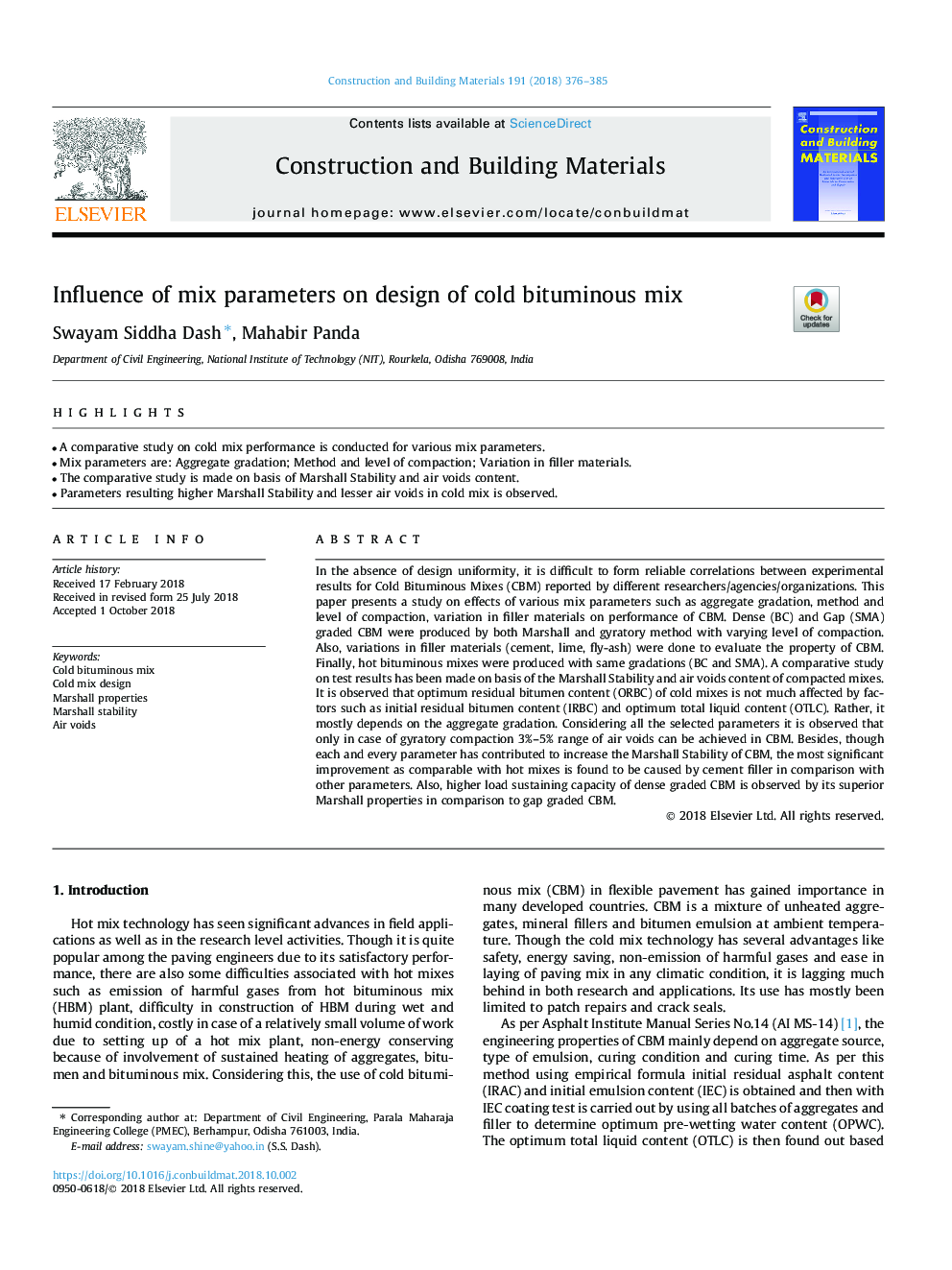| Article ID | Journal | Published Year | Pages | File Type |
|---|---|---|---|---|
| 11012636 | Construction and Building Materials | 2018 | 10 Pages |
Abstract
In the absence of design uniformity, it is difficult to form reliable correlations between experimental results for Cold Bituminous Mixes (CBM) reported by different researchers/agencies/organizations. This paper presents a study on effects of various mix parameters such as aggregate gradation, method and level of compaction, variation in filler materials on performance of CBM. Dense (BC) and Gap (SMA) graded CBM were produced by both Marshall and gyratory method with varying level of compaction. Also, variations in filler materials (cement, lime, fly-ash) were done to evaluate the property of CBM. Finally, hot bituminous mixes were produced with same gradations (BC and SMA). A comparative study on test results has been made on basis of the Marshall Stability and air voids content of compacted mixes. It is observed that optimum residual bitumen content (ORBC) of cold mixes is not much affected by factors such as initial residual bitumen content (IRBC) and optimum total liquid content (OTLC). Rather, it mostly depends on the aggregate gradation. Considering all the selected parameters it is observed that only in case of gyratory compaction 3%-5% range of air voids can be achieved in CBM. Besides, though each and every parameter has contributed to increase the Marshall Stability of CBM, the most significant improvement as comparable with hot mixes is found to be caused by cement filler in comparison with other parameters. Also, higher load sustaining capacity of dense graded CBM is observed by its superior Marshall properties in comparison to gap graded CBM.
Keywords
Related Topics
Physical Sciences and Engineering
Engineering
Civil and Structural Engineering
Authors
Swayam Siddha Dash, Mahabir Panda,
